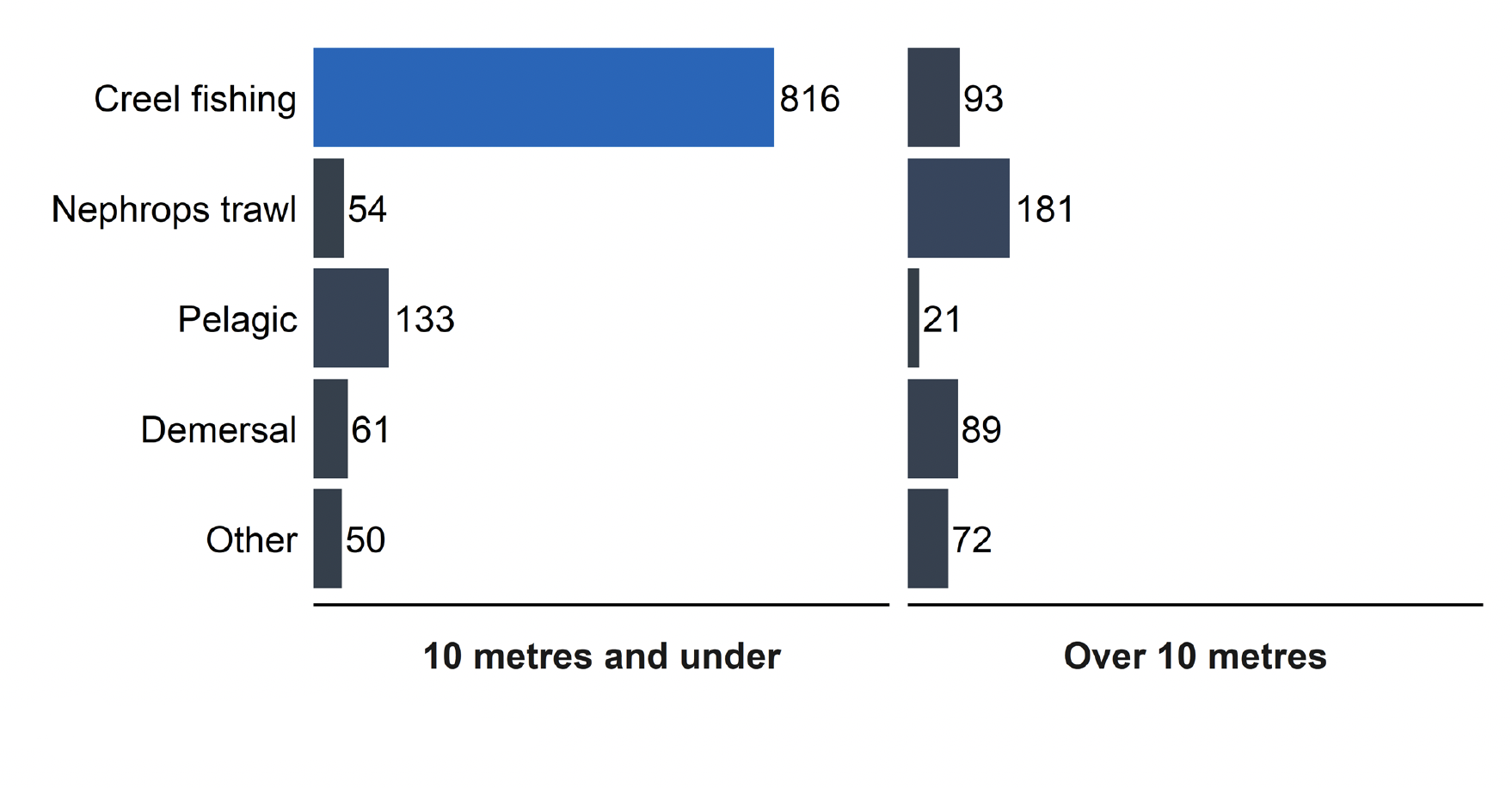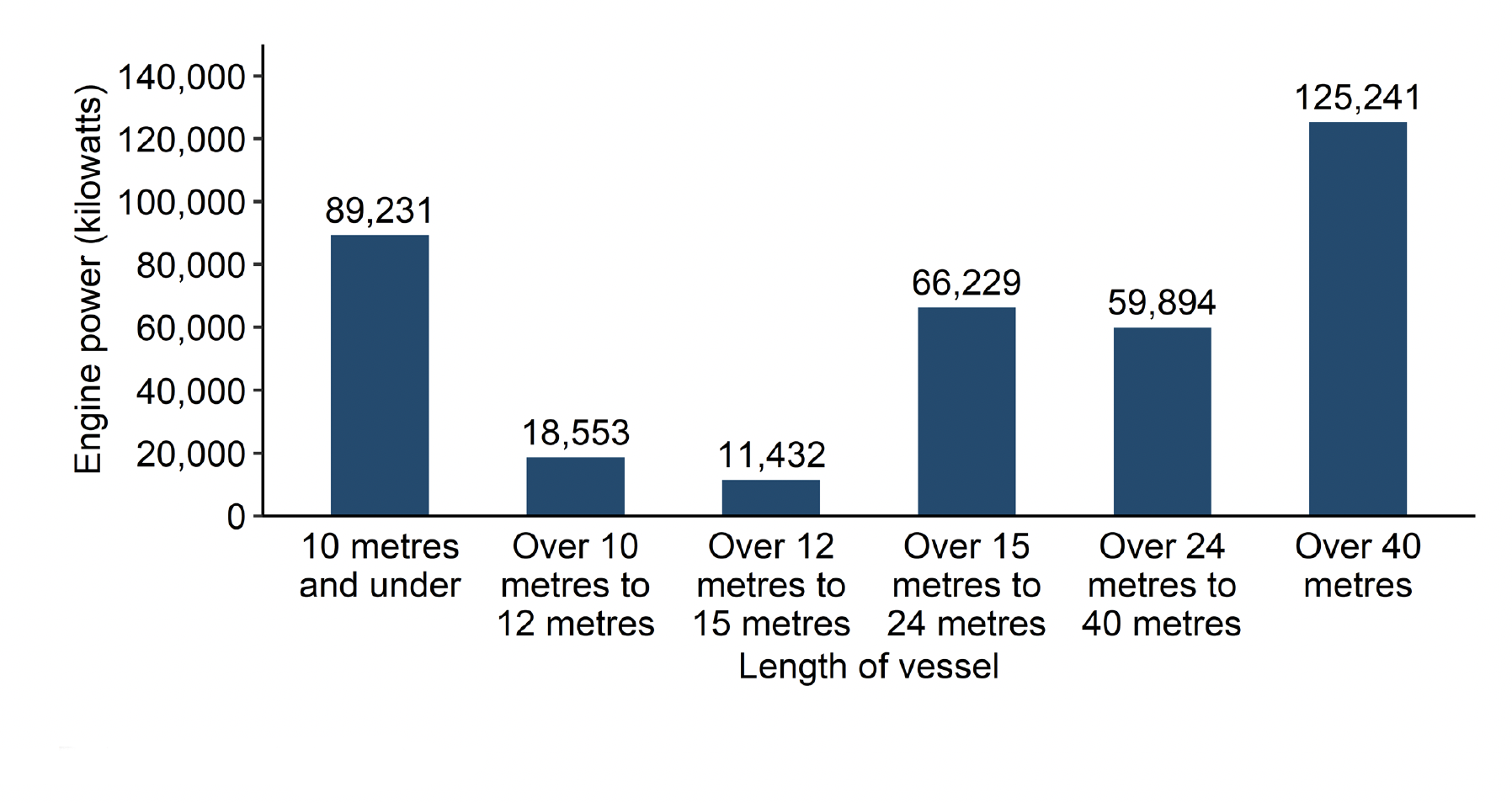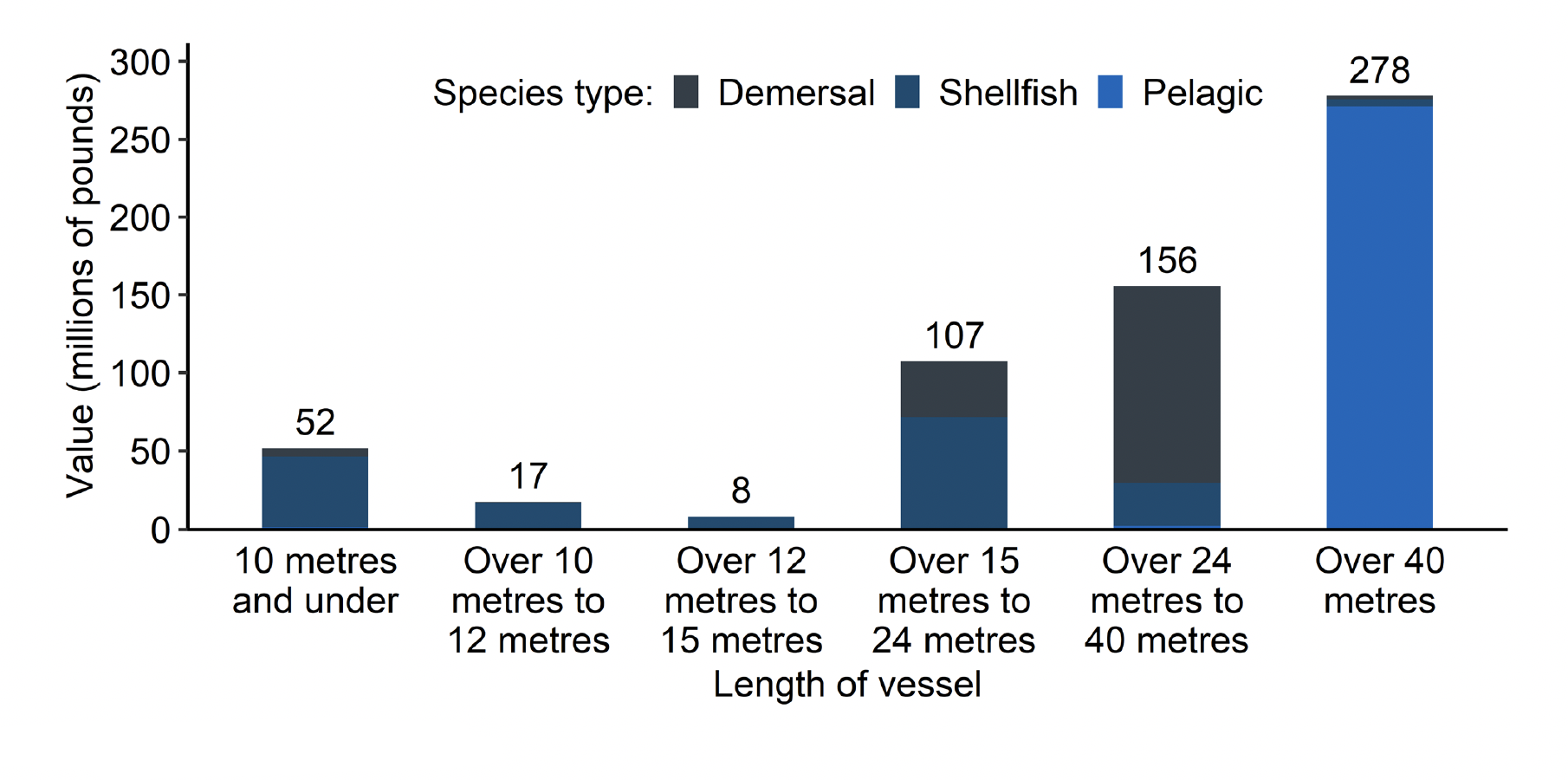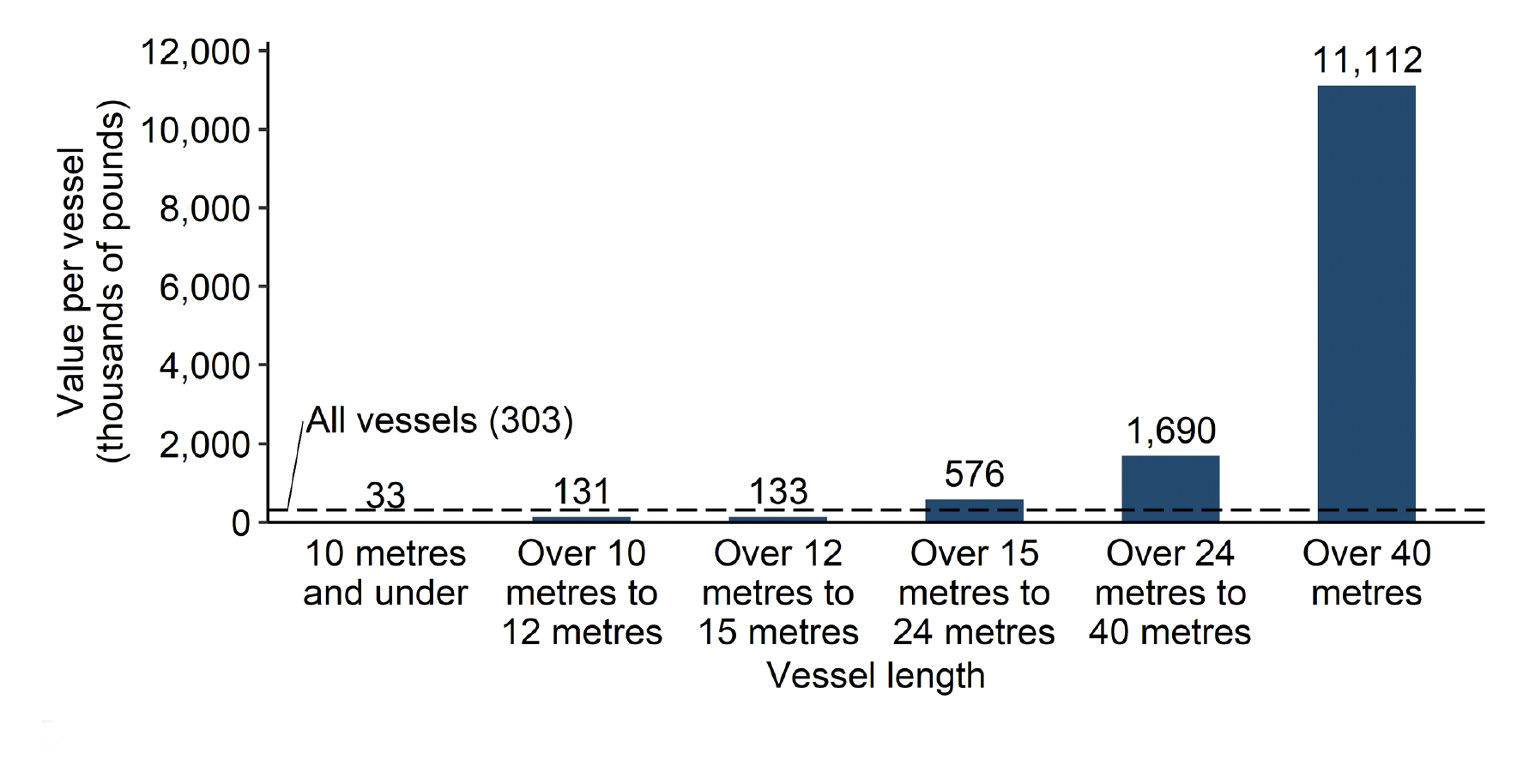Scottish Sea Fisheries Statistics 2022
A National Statistics publication that provides detailed information on the tonnage and value of landings, fishing vessel characteristics and employment. Detailed supplementary excel tables and a pdf version of the publication are available in supporting documents.
4 The Scottish fishing fleet
UK fishing vessels are required by law to be registered with the Registry of Shipping and Seamen (RSS), part of the Maritime and Coastguard Agency. Fishing vessels must also have a licence that specifies conditions that must be adhered to. For the purpose of this publication, active vessels are those that are both registered and licensed as at 31st December of that year. Scottish-based vessels are those registered to a port in Scotland licensed and administered by a Scottish district. Each district contains a Marine Scotland Fishery Office which is responsible for administering the vessels and licences within that area. UK fishing vessel licences authorise the sea areas in which a vessel can fish and the species of fish that can be caught.
The capacity of fishing vessels in terms of gross registered tonnage and kilowatt engine power is also controlled through licences. With a finite amount of licence capacity in existence and no plans to make new capacity available, this restricts the total number and capacity of vessels in the UK fishing fleet. In order to licence new vessels, fishers must acquire existing licences from other previously licensed vessels. They also have the option of aggregating or disaggregating licence components to fit the requirements of the vessel in question.
4.1 The size of the Scottish fleet
The number of active Scottish based vessels has decreased to 2,038 vessels in 2022, a reduction of 44 vessels since 2021. The Scottish fleet is dominated by vessels that are ten metres and under in length with a total of 1,545 vessels falling into this category in 2022, accounting for 76 per cent of the Scottish fleet. There are 493 over 10 metre vessels.
Chart 7. Creel fishing was the main fishing method for most, 816 of the 10 metre and under vessels.
Number of active Scottish vessels by main fishing method and length, 2022.

Data source: Table 43.
Chart 7 excludes active Scottish vessels that did not land any fish in 2022, these are recorded as non fishing in the tables. In 2022, there were 468 non fishing vessels, 431 were ten metres and under vessels.
The ten metre and under fleet mostly fish using creels (sometimes called pots), which are traps in the form of cages or baskets, typically baited and used to catch shellfish. Creels catch some shellfish species such as crabs, lobsters and Nephrops, but other species like scallops are predominantly caught through dredging. Nephrops is also caught through trawling. In 2022, 53 per cent of the 1,545 ten metre and under vessels were fishing mainly using creels.
Of the 493 over ten metre vessels, 70 per cent (346 vessels) mainly targeted shellfish, whilst 89 vessels (11 per cent) mainly targeted demersal species. Only 21 vessels mainly targeted pelagic species, with all 21 being trawlers. Creel fishing vessels and Nephrops trawlers form the majority of the over ten metre shellfish group, whilst trawlers dominate the demersal group (Table 41). Compared to 2013, the ten metre and under fleet has increased by 119 vessels (8 per cent) while the over ten metre fleet has decreased by 99 vessels (17 per cent).
Chart 8. The two vessel length categories with the largest total engine power in 2022 were the 10 metres and under vessels and the over 40 metre vessels.
Engine power (kilowatts) of Scottish vessels by length category, 2022.

Data source: Table 39c.
The total engine power of the Scottish fleet has remained broadly consistent at 371 thousand kW. The average power for the over 10 metre fleet as a whole was 571 kW per vessel compared to 58 kW per vessel for the 10 metres and under vessels.
4.2 The performance of the Scottish fishing fleet
In 2022, Scottish fishing vessels landed 429 thousand tonnes of sea fish and shellfish with a gross value of £617 million. Chart 9 shows the total value achieved by each length category as well as the split between demersal, pelagic and shellfish species landed.
Chart 9. The over 40 metre vessel length category had the highest value of landings. These vessels landed in total £278 million in 2022 with 98 per cent being pelagic species.
Value of fish and shellfish landed by Scottish vessels by length category, 2022.

Data source: Table 29.
The over 40 metre vessels are the large pelagic vessels which land the majority of the mackerel, Scotland's most valuable species. The over 15 metre to 40 metre vessels catch a mix of different species whilst the 10 metre and under vessels mostly land shellfish. In 2022, the 10 metre and under Scottish vessels landed £52 million worth of fish and shellfish with 87 per cent being shellfish.
The 10 metres and under vessels landed below average, landing an average of just £33 thousand per vessel despite being the 4th most valuable length category. This is due to the fleet being made up of a large number of vessels which are restricted in the amount they can catch due to their size.
Chart 10. The over 40 metre Scottish vessels landed the highest value of fish and shellfish per vessel, landing an average of £11 million per vessel in 2022. This is well above the average of all vessels which was £303 thousand per vessel.
Average value landed per Scottish vessel (in thousands of pounds) by length category, 2022

Data source: Tables 29 and 38a.
Contact
There is a problem
Thanks for your feedback